Special projects
PRODUCTION OF OPTICAL INSTRUMENTS FOR SPECIAL PROJECTS
Our special projects in the production of optical instruments are technological challenges that we face successfully every day. We are always acquiring new methods and processes, born from the collaboration with the best research institutes. The following works are characterised by a high level of innovation and progress in the most varied fields.
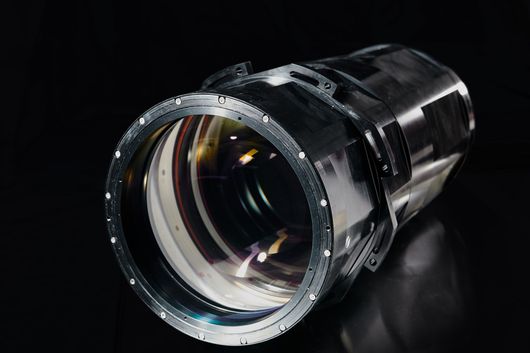
FLY EYE Telescope
Client: OHB Italia SpA
The Fly Eye telescope is a new telescope which uses the same technique as a fly's eye by splitting images into many smaller subimages in order to considerably expand its own field of view.
Gestione SILO produces these complex optical systems which are made up of 16 lenses in order to split the image. This goes along with components engineering, production, assembly and alignment of all opto-mechanics. All opto-mechanics goes through rigorous inspection tests to ensure performance levels, tests which were expected during planning based on requirements of the components and all the rest.
Selected key references
The "mega telescope" - only one in the world. From Sicily to planet hunting
The "fly-eyed" telescope to help search for space debris (and dangerous asteroids)
FLYEYE Telescope
GAIA Project
Gestione SILO for Airbus Defence and Space has realized a component of the GAIA satellite, specifically a paste filter to attenuate the radiation coming from the stars in the galaxy, collimated on the CCD sensor. The filter was mounted on a bracket of INVAR and Gestione Silo has also realized the assembly of the filter on the bracket in ISO5 chamber.
The mission (extended until 2022) of the GAIA satellite is to reproduce a detailed three-dimensional map of the portion of the galaxy closest to our System and a mapping of the Milky Way.
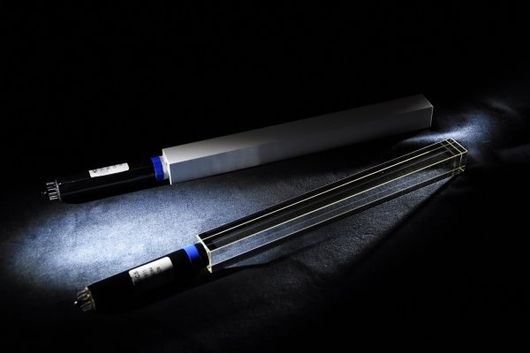
Scope of application: Experimental research on "dark matter"
Project: For the research of the signals of "dark matter" the PADME experiment of the National Institute of Nuclear Physics in Frascati is being prepared. For this purpose, an electromagnetic calorimeter has been constructed capable of detecting ordinary photons with high precision and efficiency.
The cylindrical calorimeter with a radius of 300mm and a depth of 230mm, is made up of 616 high brightness BGO crystals (LY), high intensity p, small Xoe MR.
Gestione Silo participated in the project with the production of the 616 sparkling units starting from the BGO crystals recovered from a past experiment at CERN.
For the recycling of the crystals, initially of a truncated-pyramidal shape with a trapezoidal base, a specific machining cycle was carried out with close tolerances, roughing, grinding and finishing of all the faces to create square-shaped parallelepipeds 21x21x210 mm , subsequently they were glued to the photosensors (becoming a single object) and finally painted.
The optical junction of the painted crystals would prevent the dispersion of light towards the outside which would hinder the operation of the neighboring crystals. The coupling to the scintillators allows the light to be transmitted with maximum efficiency to the photomultiplier.
The set of 616 assembled crystals are an integral part of the calorimeter that will be used for the experiment.
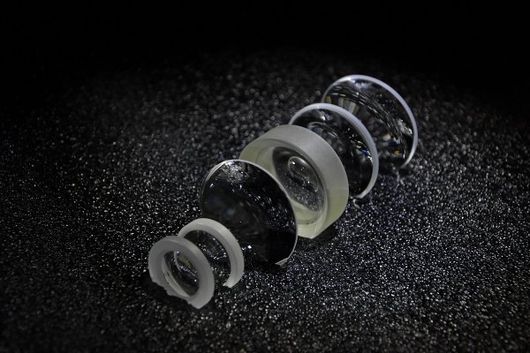
Ministar Project
Scope of application: Optical simulator of stellar fields
Features:
The Ministar project involves the study of new technologies, new materials for the production of a prototype of a miniaturized electric-optical device, lighter than those currently used. Ministar will also allow the verification of the optical and electronic functions and performance of the Multi-Haed Star Trackers in space mission programs, which can be installed directly on board a satellite.
Thanks to this, synthetic images of moving stellar fields will be generated even when the optical heads installed on a platform are obscured by non-stellar objects such as the Earth, the Moon or the Sun.
A team of companies collaborated on the project funded by the Tuscany Region.
In particular, the Gestion Silo activity concerned the study and design of the optical collimator for the infinite projection of the observed scene, making sure that Ministar is compatible with some new generation ST models. Furthermore, Gestione Silo has designed the optical components and has also dealt with the opto-mechanical integration of the lenses on the ligatures, the calibration process of the optical head with respect to the sensor.
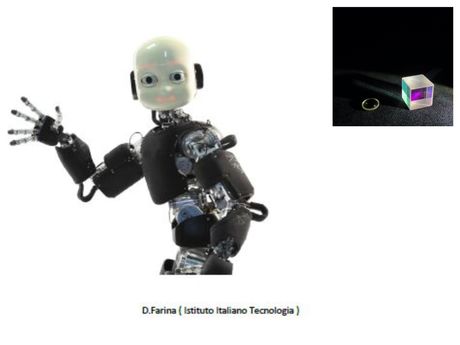
Progetto iCub
Project:
In 2015, Gestione SILO achieved a highly personalised goal for the Italian Institute of Technology (IIT) with the iCub project. iCub is a human-like robot developed at IIT and able to interact with the environment through visual stimuli. To do this, he has two high-resolution lenses in his eyes and a wide field of vision that are both necessary to capture images of the surrounding world. iCub has been equipped with two types of detectors and each lens needs specific optics to create two identical images in two orthogonal planes.
Gestino SILO has carried out the analysis of the tolerances of the objectives, producing miniaturised and mechanical custom optical systems. We have also defined and implemented the procedures for testing and mounting the objectives.
Below you will find the characteristics of the objectives:
Focal length: 5.5mm
Speed: 3
Spectral field: 450-650nm
Field of view: ± 60º
Resolution: 120lp / mm
Lens length: 27.5mm

Optical Telecommunication Payload
Scope of application:
Optics for telecommunications
Features:
Optical band communication system consisting of two elements 200mm thrower-receiver opening and 800mm focal with electronics and mechanics for tracking and aiming. In place of the vision eyepiece, a prism group has been inserted, composed of a right-hand prism and a beam-splitter cube cemented together. This is connected to an emitter group consisting of a waist relay lens, a refocuser, a foil with the tx-rx wavelength separation and a collimator. In the receiver group from the lamina with the dichroic for bending at 30°, the beams are directed towards a focusing lens by a total mirror. The group consisting of the dichroic plate and the total mirror constitutes a lozenge that can be accurately aligned in an interferometric cavity.

GIANO Prism
Scope of application:
Astronomical research
Features: 200x200mm prism dispersion in ZnSe with a 15mm edge thickness for the GIANO Spectrometer placed at the TNG Telescope, on the island of La Palma. This prism is one of the three dispersing prisms used in the TMA system of the GIANO spectrometer. GIANO is a cryogenic dispersion transverse spectrometer that works in the wavelengths of near IR (0.9-2.5 micrometers). The collimated beam with a diameter of 100 mm impinges on a commercial 23.5 lines / mm Echelle commercial grating. The transversal dispersion is obtained by means of prisms which, moreover, work in two steps. See SPIE Proceeding "The spectrometer optics of GIANO-TNG".
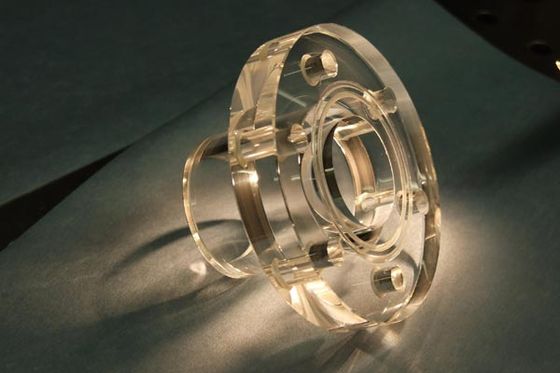
Monolithic quartz flange for vacuum chamber
Scope of application:
High Vacuum component
Characteristics:
Vacuum chamber flange used as an interface between pump and chamber, an integral part of an atomic spectroscope. The flange is made of Quartz, polished in every useful surface to prevent the triggering of breaking points. During construction, the flange was glued with a flat plate with the silicate bonding technique that guarantees a high mechanical resistance without the risk of degassing due to adhesives. This process was carried out in collaboration with the University of Perugia.
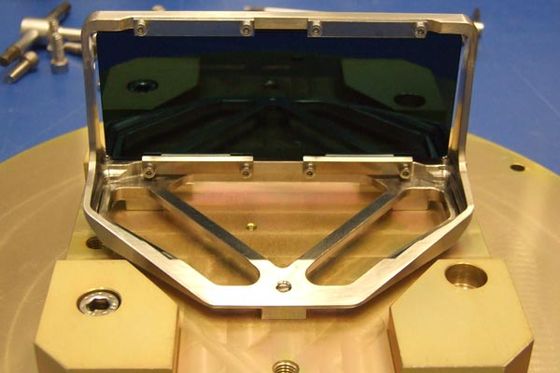
Attenuator filter for GAIA satellite
Scope:Space observation (Satellite Payload)
Features:The BAM Density Assembly was created by Gestione SILO for the space program related to the GAIA Satellite. The GAIA Payload Module (PLM) consists of two telescopes - called "ASTRO" telescopes - focused on a common focal plane, thanks to a folding mirror and a beam combiner. The BAM Density Assembly was produced by Gestione SILO, both the optical component and the mechanical structure in three assemblies: an engineering model plus two flight models. The Angle monitoring device - the so-called BAM - is in charge of monitoring the angle between the line of sight of the two GAIA PLM telescopes. The CCDs that are used for this measurement also come illuminated by the light of the stars. The aim of the BAM group is to attenuate the irradiance of the stars on the CCD while the useful BAMonitoring signal is increased to maintain an excellent signal-to-noise ratio.
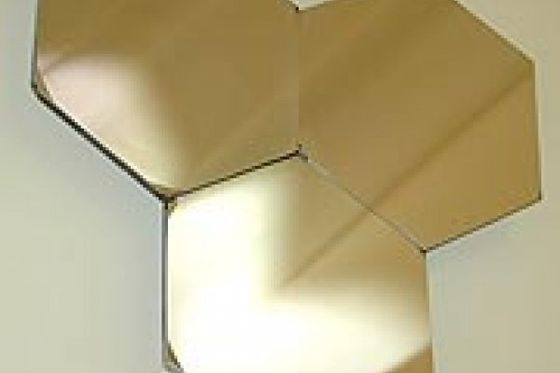
Large Spherical Mirrors
Scope of application:Solar energy
Characteristics:A solar furnace composed of 60 hexagonal mirrors that constitutes the "Plataforma Solar de Almeria", Spain. In figure 3 of the 60 hexagonal mirrors (500mm.) mounted on test mechanics. The mirrors are plane-convex, with a hexagonal profile.
Diameter: 500mm.
Thickness at the edge: 15mm.
Bending radius: 4000 + -20mm.
Focal length: 2000mm.
Material: Borofloat
Coating: Protected Aluminum
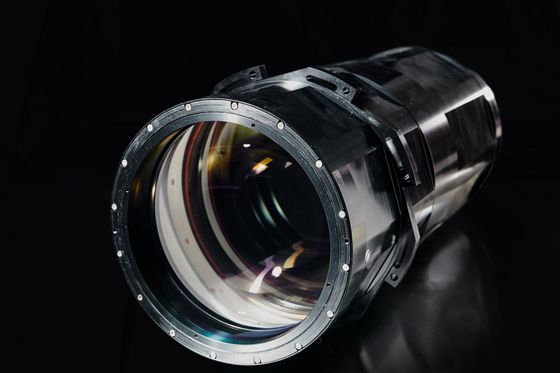
FLY EYE Telescope
Client: OHB Italia SpA
The Fly Eye telescope is a new telescope which uses the same technique as a fly's eye by splitting images into many smaller subimages in order to considerably expand its own field of view.
Gestione SILO produces these complex optical systems which are made up of 16 lenses in order to split the image. This goes along with components engineering, production, assembly and alignment of all opto-mechanics. All opto-mechanics goes through rigorous inspection tests to ensure performance levels, tests which were expected during planning based on requirements of the components and all the rest.
Selected key references
GESTIONE SILO
Via Di Castelpulci, 14 50018 Scandicci (FI), Italia
+39 055 7221367
|
silo@silo.it
VAT Reg No. 01192850483
Legal Information
| Privacy Policy and Cookie Policy







